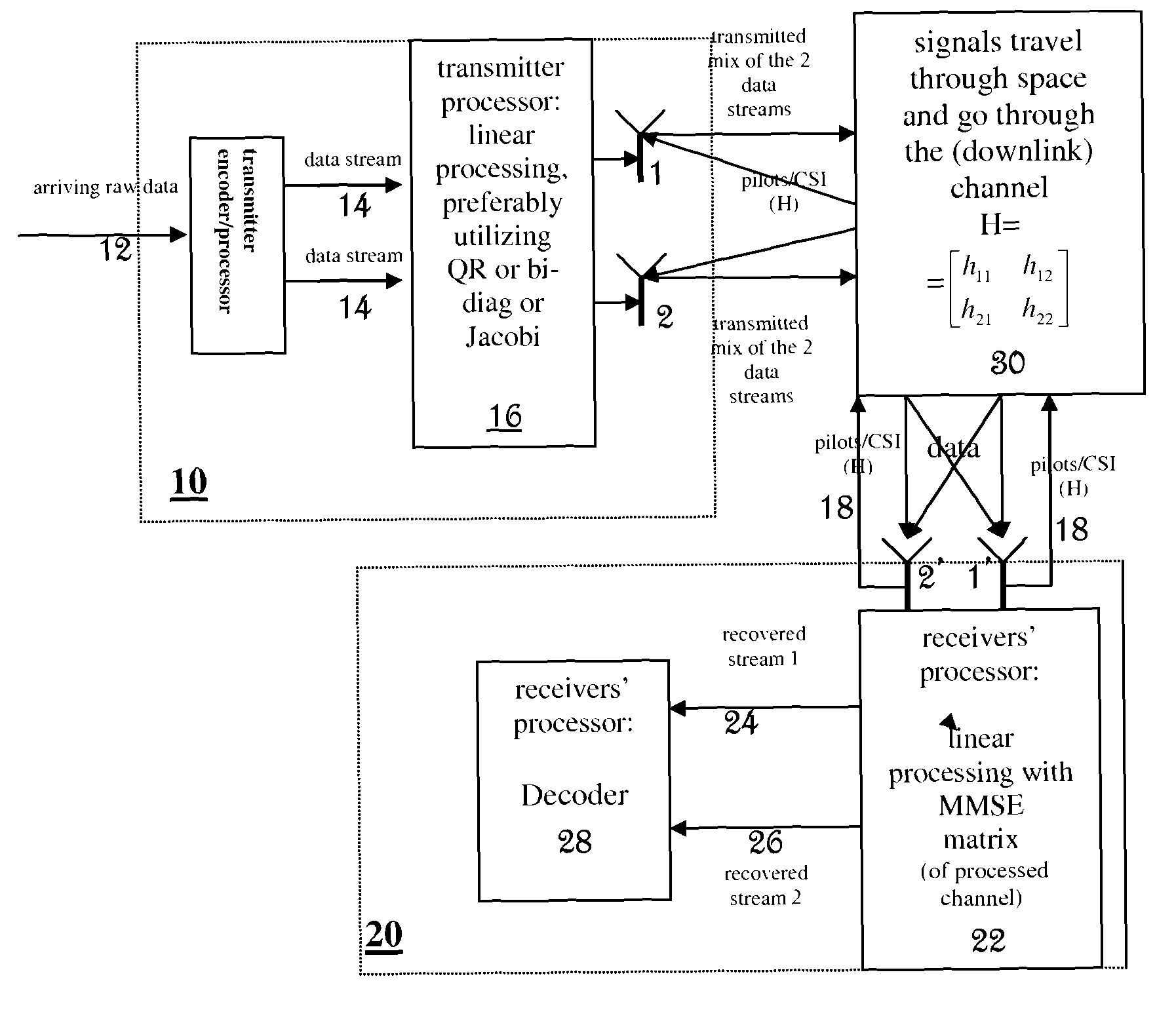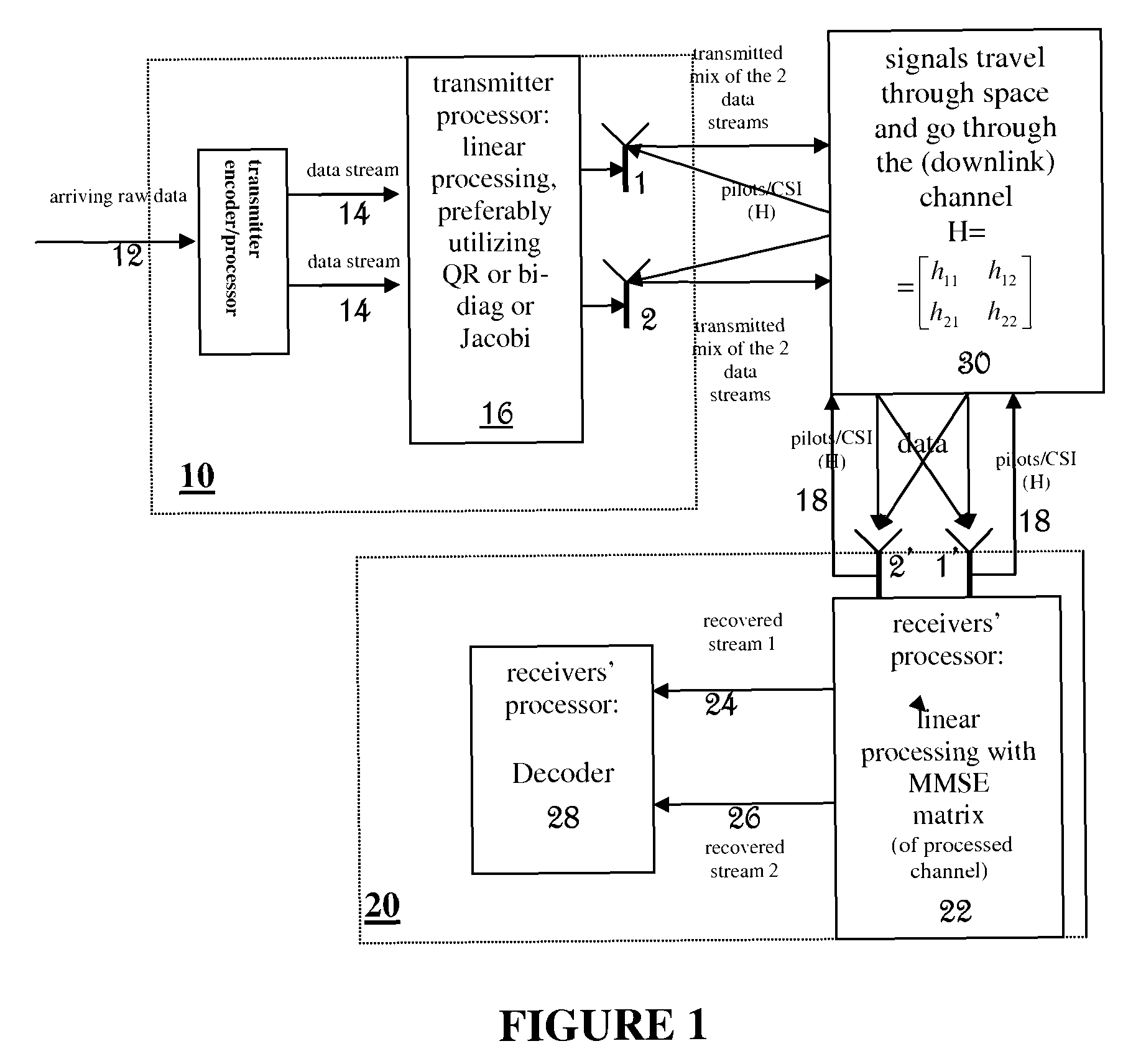Method and device for wireless communication using MIMO techniques
a wireless communication and mimo technology, applied in the direction of radio transmission, transmission, electrically long antennas, etc., can solve the problems of 2 sided svd degradation, inability to rapidly change channels, outdated and/or inaccurate, etc., to achieve the effect of reducing the cost of circuitry and computational complexity, computation complexity, and reducing the cost of circuitry
- Summary
- Abstract
- Description
- Claims
- Application Information
AI Technical Summary
Benefits of technology
Problems solved by technology
Method used
Image
Examples
Embodiment Construction
[0019]The present invention relates to a closed loop MIMO wireless communication technique and device. It provides performance close to that of the optimal SVD, with much less cost in circuitry and calculations. This is accomplished by simplified transmitter's linear pre-processing of the data to be transmitted. The matrix used for this linear pre-processing is a unitary matrix obtained through decomposition of the channel matrix. While the resulting effective channel matrix is typically non-diagonal, its diagonal is statistically enhanced with respect to Frobenius norm. The receiver performs MMSE on the received signals to further mitigate the interference between MIMO streams. The corresponding MMSE matrix is computed by the receiver with respect to the processed channel. It will be appreciated that although this scheme has sub-optimal performance, it is significantly more practical than the optimal SVD scheme. This technique is useful in particular in LTE and WiMAX networks havin...
PUM
 Login to View More
Login to View More Abstract
Description
Claims
Application Information
 Login to View More
Login to View More - R&D
- Intellectual Property
- Life Sciences
- Materials
- Tech Scout
- Unparalleled Data Quality
- Higher Quality Content
- 60% Fewer Hallucinations
Browse by: Latest US Patents, China's latest patents, Technical Efficacy Thesaurus, Application Domain, Technology Topic, Popular Technical Reports.
© 2025 PatSnap. All rights reserved.Legal|Privacy policy|Modern Slavery Act Transparency Statement|Sitemap|About US| Contact US: help@patsnap.com



